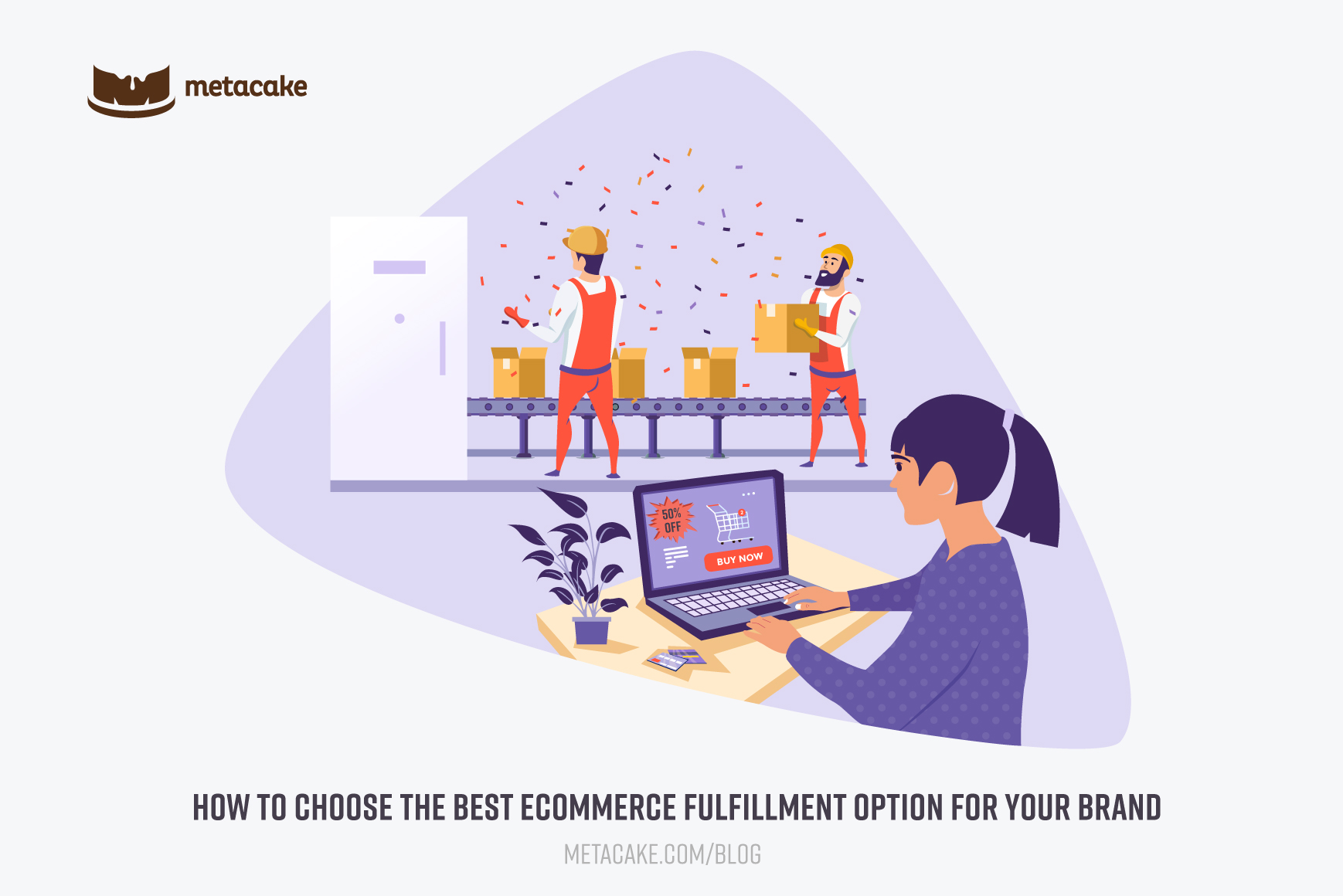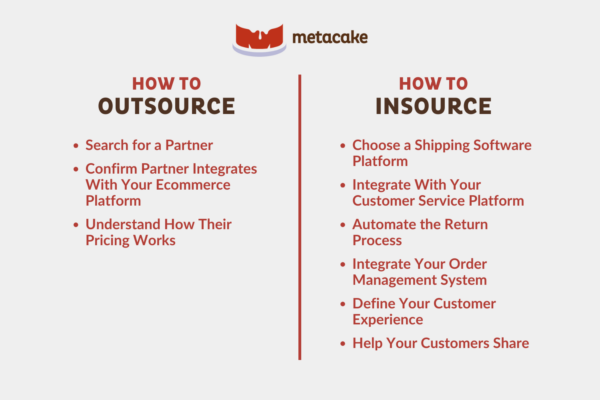
How to Choose the Best Ecommerce Fulfillment Option For Your Brand
Fulfillment isn’t a sexy topic. It’s one of those things most ecommerce companies set up and never think about again (unless there’s a problem).
The thing is, ecommerce fulfillment needs change based on the stage of business you’re in. Your needs in the early survival stage differ greatly from your needs in the health stage or influence stage.
In this article, we’re digging into different fulfillment options, how to find the best fulfillment companies, and what to consider based on your stage of business.
Ecommerce Fulfillment: Insource or Outsource?
When it comes to fulfillment, you have two basic choices: insource or outsource. What you do depends on the stage of your business and your philosophy on the customer unboxing experience.
1. Consider Your Growth Stage
If you’d like a quick refresher, check out our playlist on the different ecommerce business stages.
The obvious fulfillment option for most ecommerce businesses in their infancy is to opt for a simple, outsourced solution. The best fulfillment companies take a huge load off your business, freeing you up to focus on products, improvements, and customers. Plus, outsourcing is typically the cost-effective option for low-volume operations.
Once your brand starts to gain traction and your business grows a bit, it’s time to pause and reevaluate. Is outsourcing still the best option for you? Maybe. Consider these two questions to decide:
- At your current stage of growth, is outsourcing still the most cost-effective option?
- Would your brand benefit from certain insourcing perks, like the ability to tailor the customer unboxing experience?
At each stage of growth, be sure to reevaluate whether outsourcing or insourcing makes the most sense for your fulfillment.
2. Consider Your Customer Experience
Insourcing provides the opportunity to create a unique, brand-building customer experience through each touchpoint, from initial contact through unboxing and beyond. This isn’t easy, but it’s a key component of growing customers into raving fans.
If you commit to insourcing, you have to be willing to invest the time, resources, and money into making the entire experience one your customers can’t forget. A phenomenal unboxing experience, for example, is a great way to create brand advocates who come back again and again and spread the word to their friends.
That being said, insourcing isn’t for every brand. If you don’t have the necessary resources to invest in a curated, managed process, stick with the more hands-off, outsourced approach.
Of course, there’s an exception to every rule, and in this case it’s wholesale businesses.
Wholesale businesses are a completely different animal. If this is your company, then you need to work with one of the best fulfillment companies, an experienced partner you can trust to adhere to strict wholesale shipping rules. And since wholesale doesn’t involve a customer experience component, you lose nothing by outsourcing.
Once you decide whether you’ll outsource or insource your fulfillment, follow the steps below to get started.
How to Outsource (With the Best Fulfillment Companies)
Step 1: Search for a Partner
The best fulfillment companies for ecommerce businesses are often pick-and-pack warehouses in your area. Try Googling “outsourced fulfillment,” “pick and pack fulfillment warehouse,” or “ecommerce fulfillment” alongside your city name to find a partner near you.
If you have relationships with other ecommerce brands, they may already know the best fulfillment companies in your area or niche. Ask them for recommendations, or you can reach out to us for suggestions.
Step 2: Confirm Partner Integrates With Your Ecommerce Platform
This is the most important part of picking a partner. If a fulfillment partner isn’t integrated with your ecommerce platform, just walk away.
For ecommerce businesses, orders must stay in sync with the fulfillment process and shipping information must get passed back to your ecommerce platform. Inventory data need to stay in sync, and customers need to get their items on time.
A lack of integration is an immediate deal-breaker. Issues here have a huge impact, affecting your operations, your customers, and your brand reputation.
Step 3: Understand How Their Pricing Works
The final step in finding the best fulfillment company for your business is understanding their pricing. Dig into how each potential partner’s pricing works.
Usually, they’ll offer a flat fee for pick-and-pack per product (or per packed item, which could include marketing materials or other extras). On top of that is the cost of shipping. Most warehouses have bulk rates with carriers, so they pay less for shipping than standard rates.
Pro tip: Consider the price you charge customers for shipping. We typically recommend ecommerce businesses use standard flat rates rather than live rates for customers at checkout. This provides a better experience for your customers and keeps the accounting simpler between you and your fulfillment company.

How to Insource Ecommerce Fulfillment
Step 1: Choose a Shipping Software Platform
We typically recommend Shipstation, the top platform for managing fulfillment processes for ecommerce businesses. The platform makes managing and tracking your shipments easy, even offering a branded tracking-and-returns portal for customers.
Again, when it comes to charging your customers for shipping, go with a flat rate. It makes your life — and their experience — so much better.
Step 2: Integrate With Your Customer Service Platform
Fulfillment and customer service need to work hand in hand, especially when it comes to returns.
These days, easy, hassle-free returns are key to building fans, so make the experience seamless for customers. Consider integrating Zendesk (or another customer service platform) as well as Klaviyo to send out automated email series to your customers based on their order progress.
Step 3: Automate the Return Process
As mentioned, easy returns are key for a thriving ecommerce businesses. You may have this capability directly with your shipping software. If not, try out the app Returnly if you’re on Shopify.
Step 4: Integrate Your Order Management System
If you use an order management system, like Stitch Labs or Oscar, integrate this platform as well! This brings everything into a unified dashboard for easy viewing and management.
Step 5: Define Your Customer Experience
Now for the fun part. You insourced for a reason — to create a truly unique, exceptional unboxing experience for your customers.
Purchase branded packaging with a custom design that reflects your brand. We don’t mean slapping your logo on a standard box. Be unique and use your imagination to design packaging that fits your brand.
Don’t forget to include information on how to use your product. You might consider surprising customers with a bonus freebie or a coupon (more on that next). When you insource, the opportunities are endless.
Step 6: Help Your Customers Share
It’s important to give your customers a way (and a reason) to share your brand with their friends. Surprise customers with coupon cards they’ll want to talk about with others. This incredibly low-cost marketing tactic helps spread the word about your brand. In fact, it’s effective whether you insource or outsource.
Pro Tip: Incentivize your customers to record and review their unboxing experience via video (shared with you and/or on YouTube, TikTok, Instagram, etc.). These reviews are incredibly impactful and provide your team with media to use in advertising.
Ecommerce Fulfillment Options: Final Thoughts
For younger brands, the primary question in considering ecommerce fulfillment options is one of cost versus customer experience.
If your brand is competing on price, then cost will be the primary driver of your decision. However, if you’re trying to build a long-term brand, then focusing on customer experience and sacrificing margins in the near-term might be the better decision for you.
For established brands with higher order volumes, the question becomes one of cost versus infrastructure. Insourcing is often the cheaper option for larger brands, but it requires a high level of infrastructure — lots of people, time, and energy.
At every level of business, have to weigh your options. Just remember, shipping isn’t the end of the journey; it’s the beginning. Endeavor to identify the moment when a more curated customer experience makes sense for your brand. Because you don’t want one-time customers. You want fans.


